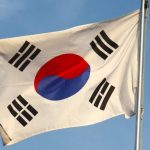Oil crept up Thursday after China’s central bank sought to stem the rising tide of pessimism over the country’s property market and the broader economy. Prices had fallen for the previous session on simmering concerns over the impact on fuel demand from a deepening property crisis that is stifling momentum in the world’s second-biggest economy and from the potential for further increases to U.S. interest rates, which crimp demand for goods and services.
The latest rally in crude was also supported by a weaker dollar, which makes commodities priced in the greenback more affordable to buyers using other currencies. But the market’s outlook remains cloudy. In the near term, “the risk of a major correction is high,” said Tom Kloza, an analyst at OPIS. “Hedge funds are very long on oil and petroleum products, and when they start unwinding positions, it will cause a price correction.”
In the longer term, he expects a return of geopolitical concerns, including tensions in the Middle East; Venezuela’s steadily falling production; and President Donald Trump’s threats to restore sanctions against Iran, OPEC’s third-largest producer. All of that leaves a “very tight sliver” between global supply and demand, Kloza added.
Oil producers are cutting production to balance markets, but more is needed. “The problem is the market is not fully supplied, and even though OPEC+ has cut output, there are still too many non-OPEC sources adding to the balance,” said Stephen Innes of the New York Mercantile Exchange.
Traders have been wary of buying the commodity amid fears that China’s economic slowdown could trigger more pain in emerging markets. A mass mortgage boycott by Chinese homebuyers, prompted by stalled and delayed real estate projects, is sabotaging the sector’s recovery, which accounts for 25% of the economy. It signifies the broader anxiety about an overheating property market and a deepening debt burden.
At the same time, central banks around the globe are raising interest rates to prioritize the battle against stubborn inflation. That hardly bodes well for oil demand, which depends on consumer spending and business investment to grow.
On the supply side, Saudi Arabia said on Monday it would extend a one million barrel-per-day production cut for another month through August. Russia, meanwhile, is reducing exports to further trim supplies. Combined, that should help draw down inventories, which have been rising recently. GIVEN THE CURRENT UNCERTAINTY, the IEA expects global demand to rebound next year, which could be challenging to achieve. In a report this week, the global oil group IHS Markit said that the market is in a “delicate equilibrium.” It said the balance would require more cuts from OPEC and more support from emerging economies. It predicted that the global inventory surplus would fall to about 1.1 million bpd in 2023 from 1.4 million bpd this year. That will allow the world to begin a gradual shift toward a deficit.
















